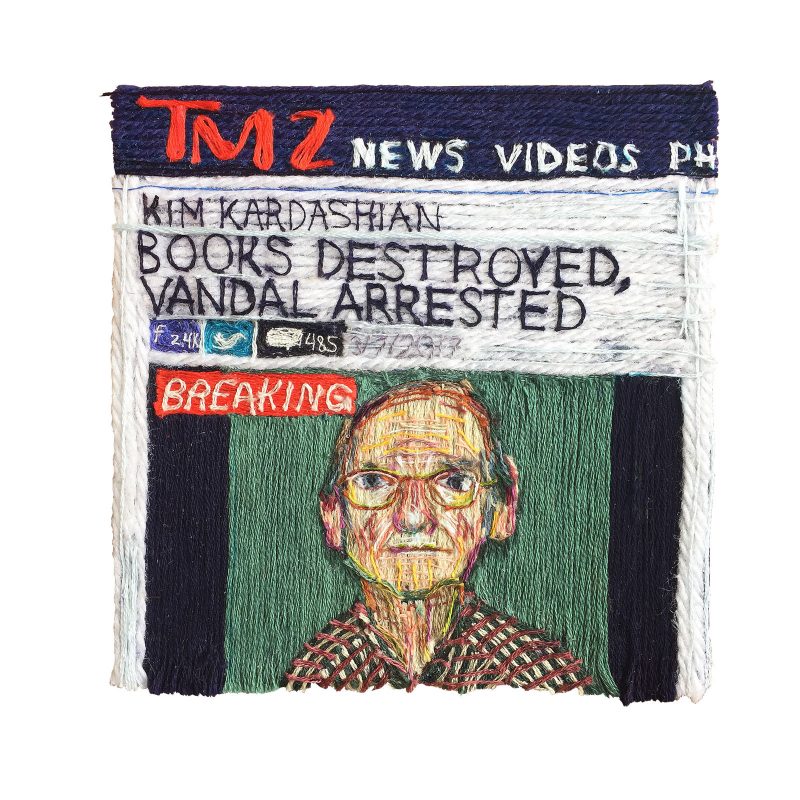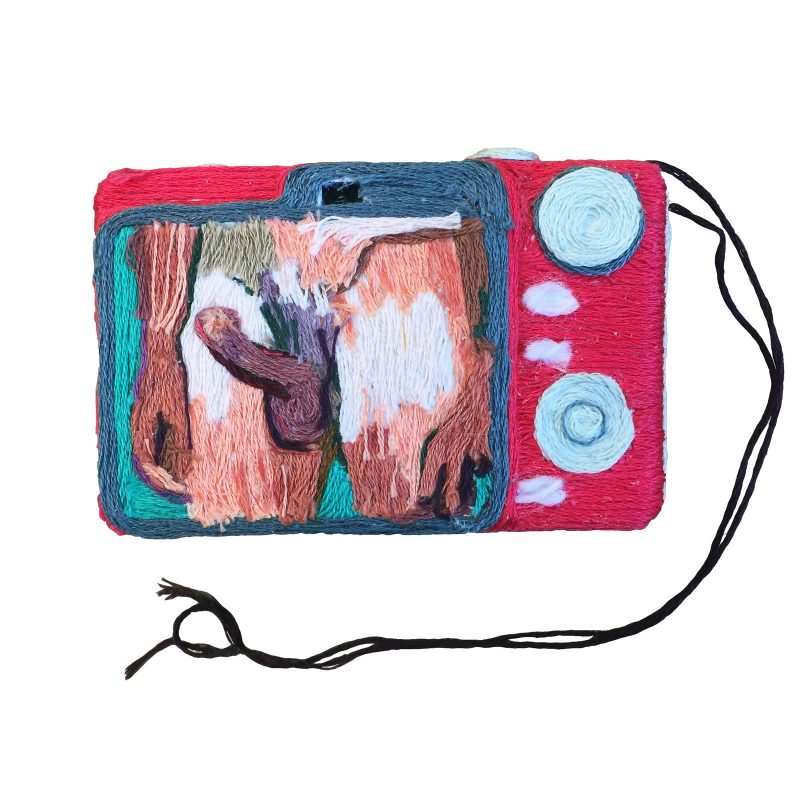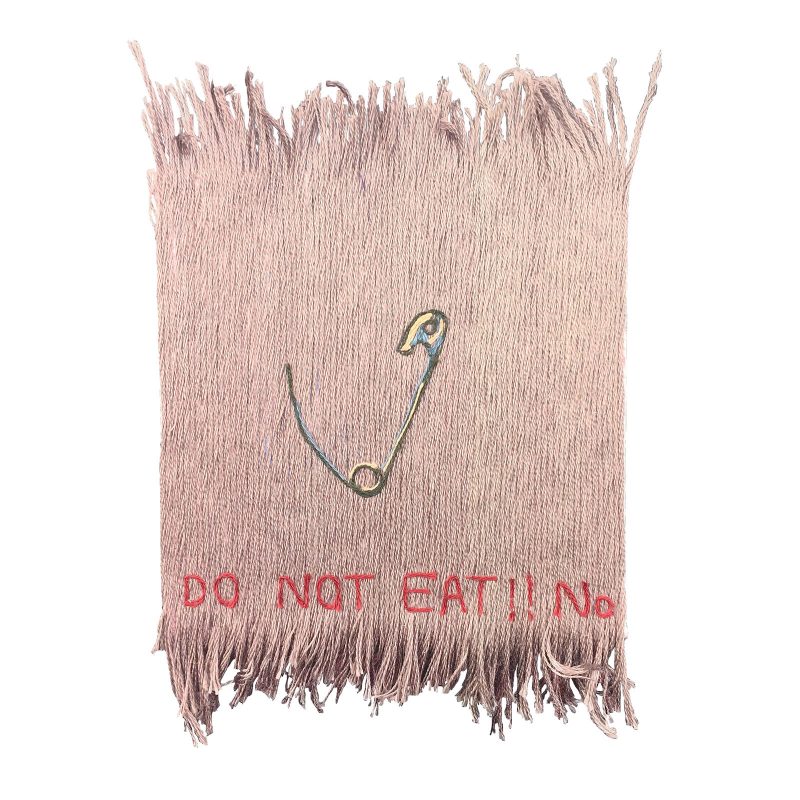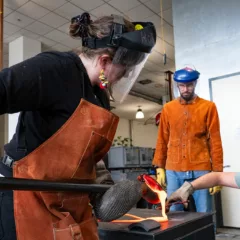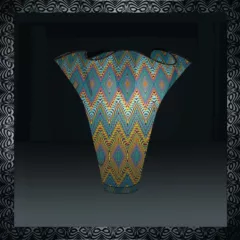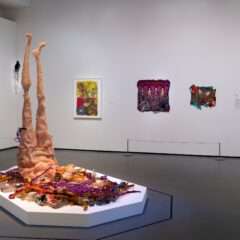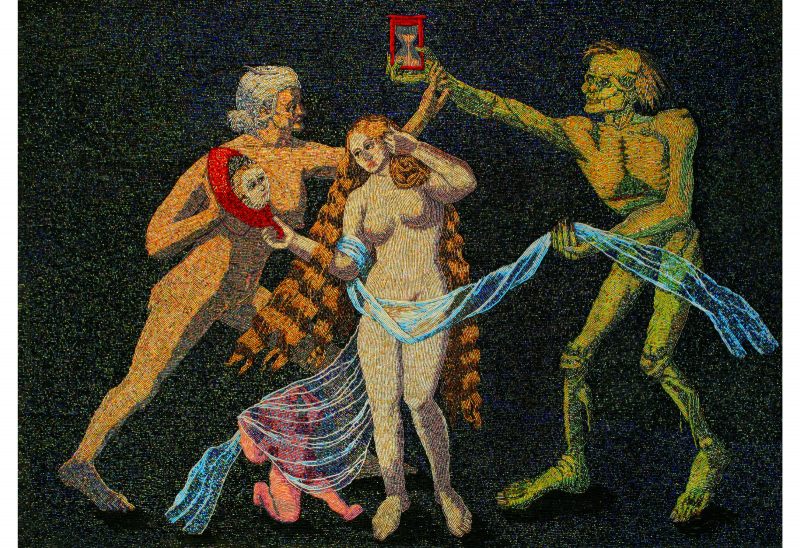
Ariel Posh visited my house on a Saturday. Though I had been following her unique, highly detailed artwork on Instagram for a few years, this was our first time meeting in person. Originally from Bethlehem, PA, she just moved back to Pennsylvania in May. Posh attended a charter arts high school in the Lehigh Valley with a very traditional visual arts curriculum that focused exclusively on painting and drawing. “I didn’t know fiber art was a thing until I went to college,” she recalls with a laugh. Because she grew up doing ballet, Posh made costumes and taught herself how to sew as a child. She began channeling her homespun skills, while pursuing a BFA at the Maryland Institute College of Art (MICA), by embroidering text for a project during her freshman year. Later, while taking an Intro to Fibers class, she got acquainted with weaving and dyeing. “I realized how much more potential there was for texture and color. It was unlike in my painting classes; you didn’t have to justify why you were using yarn in the fiber department.” Although Posh remained a painting major for the duration of her time at MICA, she considers fiber to be her preferred medium. “I call painting my ‘booty call,’” she jokes. “I don’t call it up for years, but sometimes I hit it up in the middle of the night like ‘I need you!’”
A passion, not a gimmick
A few years ago, Posh started making what she calls “thread paintings,” in which she glues down layers of embroidery floss. “I did that for a couple of years almost exclusively,” she says, “but lately I’ve been doing stitched beading work and rug making.” She brought several pieces to show me in person, including a rug shaped like a giant penis and a thread painting of JonBenet Ramsey. Ariel graduated from MICA this past spring and spent the majority of her senior year working on a five-foot beaded tapestry. “For months and months I was working on this big beaded piece and people would tell me to just stop. They’d be like, ‘you’re wasting your time!’ For some reason if you try to do ‘fine’ art with these materials people see it as a gimmick, or they think it’s only about women’s work, even if it’s not.” Posh was inspired to start working with beads by a professor she had at MICA who made beaded tapestries. “He went to Yale back in the day. He’s been around in New York for a long time, and he got shit on all the time as a man for doing something that was for women.”
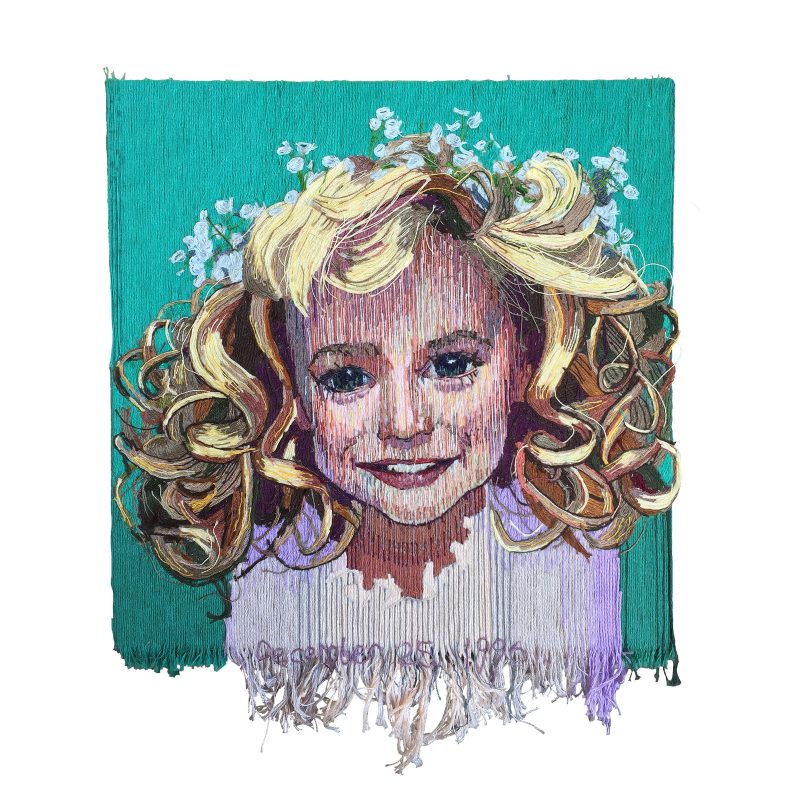
On women’s work
When I asked Posh what she thought about the word “craft” and its tendency to devalue work done by women, she agreed that the term “craft” can sometimes imply the work is less serious or mature or that the artist “isn’t fully committed” to it. “I don’t know why we diss on women who sell their knitting at the county fair, though. It’s an extreme form of making.”
I went on to ask Posh how her identity as a woman influences her work. “I definitely think about gender and what I should push and pull in my work, and what I should avoid,” she responded. “I worry I’ll be seen as representative of all women artists if I do something real bad.” She notes that this pressure to singularly represent all artists who share parts of your identity is amplified if you are queer or a person of color. Regarding how her gender influences the way that her work is perceived by others, Ariel replied: “People perceive everything, every piece I make, to be about gender. And yeah, sometimes that’s what it’s about, but people assume everything has to be about that. Male artists can make art about literally anything they want and people love it, but I don’t think women are afforded that luxury yet. Full vulnerability is not demanded from men.”
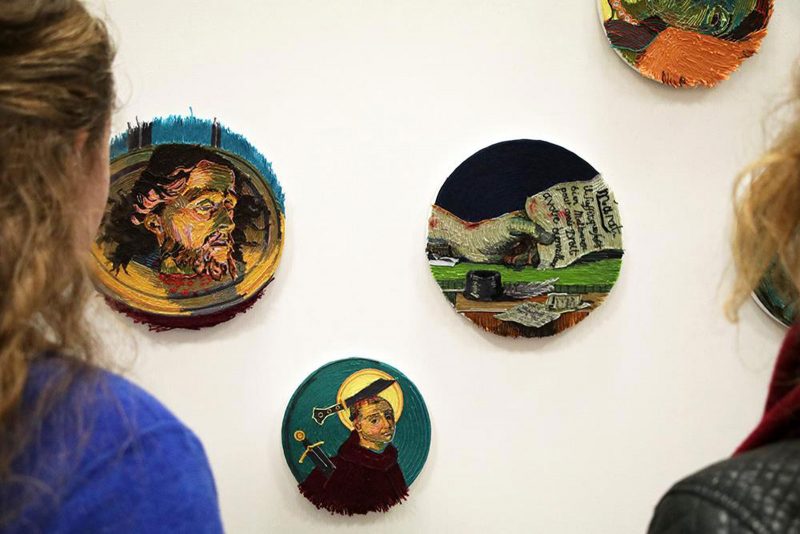
On seeing yourself represented
When our conversation turned to why representation in art matters, Posh recalled a story that Amy Sherald (best known for painting Michelle Obama’s portrait) shared with her and her peers during a recent speech at MICA. Sherald talked about what it felt like visiting a museum and, for the first time in her life, seeing people who look like her represented in artwork. Posh related that experience to how different professions are cast on TV, and the way those choices influence children. “I don’t think a lot of little girls grow up thinking they can be firefighters, you know?” she said. “I think the same is true in the arts. That’s why I think representation matters.” So how do artists work towards positive representation? “Having women of color and queer women on boards of things and making more artistic decisions and curating exhibitions is really the place to start. If they are making the work and curating the shows and running the museum and picking out the art, I think representation will follow.”
For more photos or information, visit Ariel Posh’s website!
Read Roberta’s report on Amy Sherald’s 2018 slide talk at Pennsylvania Academy of the Fine Arts.
Read about Baltimore fiber artist and MacArthur awardee, Joyce Scott.
More Photos
